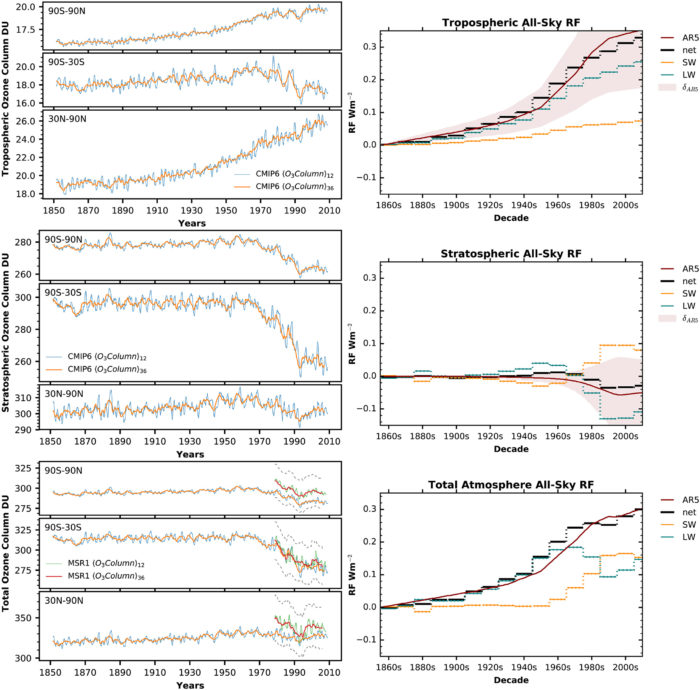Historical Tropospheric and Stratospheric Ozone Radiative Forcing
New research publication lead by Dr. Ramiro Checa-Garcia, from the Department of Meteorology at the University of Reading.

Radiative forcing is a key concept used in climate science to ascertain the strength of different agents, in driving climate change. In this context, ozone is recognized as one of the main contributors to radiative forcing according to recent assessments of the Intergovernmental Panel on Climate Change. The relative uncertainty remains higher than for other greenhouse gases. This paper evaluates the ozone radiative forcing via calculations based on a newly created ozone data set for the Coupled Model Intercomparison Project (CMIP) phase 6, an initiative designed to better understand past, present, and future climate changes. In general, human activity has led to an increase in ozone concentrations in the lower atmosphere (the troposphere) and decreases in the upper atmosphere (the stratosphere); our paper investigates the effect of both these changes. Results indicate that the CMIP ozone radiative forcing is 80% larger in the current phase 6 than a similar estimation based on data used in CMIP phase 5. Presents insights into how ozone changes have led to stratospheric temperature changes, as well as the geographical distribution of ozone radiative forcing. See Publications for details.
